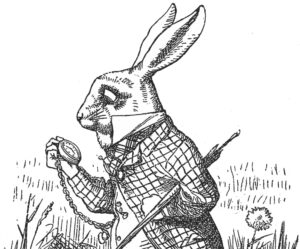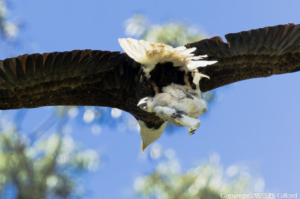For decades, the few, the scrappy, the last native plants in the San Joaquin Valley held on. They made do in the spots that nobody wanted to plow: Roadsides. Back lots. The watery edges of fields, where a year’s crop could be wiped out in a single deluge. Around them, an agricultural land rush infused with the orthodoxy of “clean farming”—suffer no plant to live that isn’t making you money—transformed grasslands, riparian forests, seasonal lakes, and marshes into cash crops.
A hundred years after that land rush, times have changed. Aquifers are depleted from overpumping. Climate change is amplifying the existing melodrama of California’s weather to flood and torch agricultural livelihoods. The powers that be have come crawling back to native plants, asking them to stabilize riverbanks, absorb floodwaters, recharge aquifers, clean the air, serve as firebreaks, shelter and feed wildlife, filter agricultural runoff, and block the spread of invasive species.

About this project: Bay Nature is reporting on a potentially transformational amount of funding for nature in the Bipartisan Infrastructure Law and the Inflation Reduction Act. Tell us what you think or send us a tip at wildbillions@baynature.org, and read more at our Wild Billions project page.

Dos Rios Ranch Preserve, scheduled to open next year as the first new state park in over a decade, is emblematic of this about-face. Once a flood-prone dairy farm and almond orchard, this land, at the confluence of the San Joaquin and Tuolumne Rivers, about an hour’s drive from the East Bay, has spent the last ten years being re-fashioned into a wild place by the nonprofit River Partners. “What we are doing is commercial agriculture in the opposite direction,” says Austin Stevenot, land manager for River Partners, which has restored riparian landscapes in California since the 1990s. “We’re putting plants and stuff in the ground—not to pull a crop, but to create a place for people and animals.”
Getting to that place, though, takes a lot of seeds.
The seedy underbelly of habitat restoration
Across the country, demand for native seed outpaces supply. But California has special seed problems. It’s a big state, with a dizzying array of elevations, landscapes and microclimates. Some of the biggest hotspots for restoration, like farmland within the San Joaquin Valley, are far away from the wild landscapes where a restoration project could gather a large amount of seed. There are not enough seeds, not enough companies collecting and growing out more of them, not enough biodiversity among the seeds that are available. There is often a mismatch of a year or longer between when a project realizes it needs a certain kind of seed, and how long it takes for a seed producer to grow out enough of it. And it’s the kind of complicated, chaotic marketplace that leads to high overhead, leaving restoration projects (often working on slim, tax-payer-funded budgets) with higher prices and less choice.
“This shortage is something that the agencies are talking about,” says Julie Renter, president of River Partners. “But it hasn’t made it into the public discussion yet. And it needs to be. Because it’s critical.”
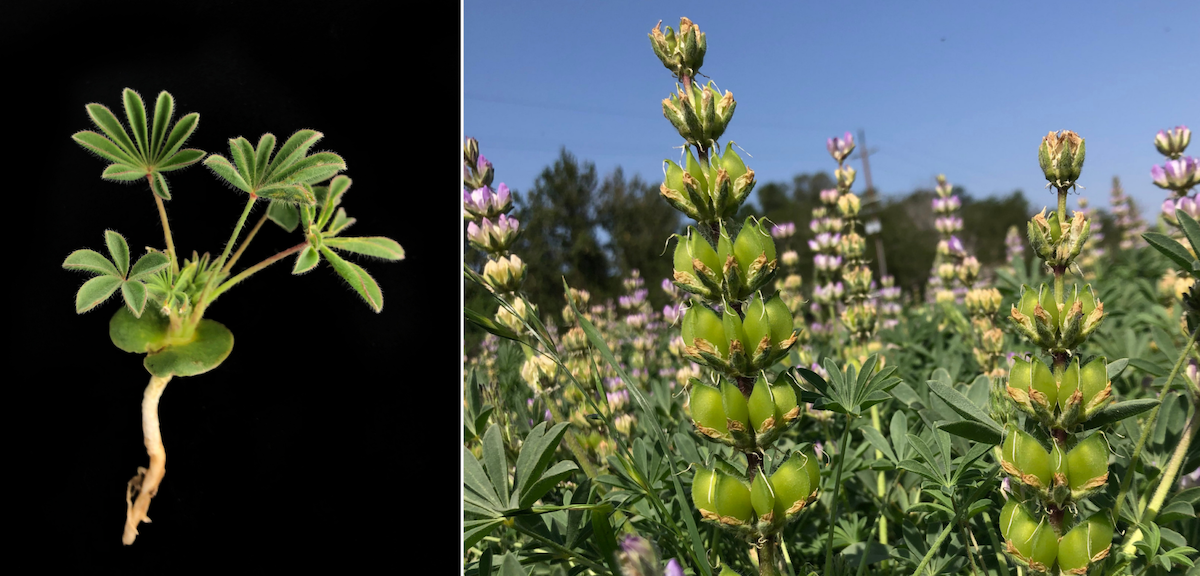
Not everyone agrees that there’s a shortage. Like “organic” or “all-natural,” “native” is a term that can mean a lot of different things to a lot of different people. “Native” could mean “first generation wild seed collected from just a few miles away,” or it could mean “seed from a species that is native to California, but collected from a completely different part of the state, and grown for generations on a seed farm in Montana.” The goals of a transit agency that is trying to stabilize a hillside, or a landscape architect putting in a bioswale to protect an apartment complex from flooding, differ from the goals of someone trying to rebuild a biodiverse ecosystem. “If all you care about is having something green and kind of local to your site, you’ll be able to find seeds,” says David Festa, cofounder of the California Native Seed Supply Collaborative, which is advocating to change statewide policies in ways that increase the native seed supply. “But that’s not what the restoration folks want. And it’s not what is needed for building climate resilience in the Central Valley.”
Scale of the problem: big
Earlier this year, experts convened by the National Academy of Sciences published a 253-page report detailing how rising demand—caused in part by a long run of record-breaking climate-change-related natural disasters—and stagnant supply have together brought the availability across the US of native seed for restoration projects to dangerous lows. “Millions of acres of public and private land in the United States are at risk of losing the native plant communities that are central to the integrity of ecosystems,” they concluded.
In California, as with elsewhere in the US, a host of federal and state agencies are tasked with planting natives on the public lands they supervise. Among them: the U.S. Fish and Wildlife Service, the U.S. Forest Service, the National Park Service, the California Wildlife Conservation Board, the California Department of Water Resources, the San Francisco Public Utilities Commission, Caltrans, and the USDA’s Conservation Reserve Program. The Bureau of Land Management is several years deep into developing a National Seed Strategy. All these agencies have a lot of work ahead of them. Gov. Gavin Newsom’s Executive Order N-82-20 committed to conserving 30 percent of the state’s lands and coastal waters by 2030. Federal agencies have funneled more than $1 billion from the Bipartisan Infrastructure Law and Inflation Reduction Act to climate and ecological restoration projects across the state, with much more to come in the next few years. California’s Sustainable Groundwater Management Act and climate change are expected to put over one in ten acres of irrigated farmland in the San Joaquin Valley into retirement by 2040, as Bay Nature has reported.





These Central Valley animals—coyote pups, migratory geese, pipevine swallowtail, marsh wren, and the riparian brush rabbit—all benefit from the restoration of wetlands and riparian habitat. (Courtesy of River Partners; all but rabbit by Michael Rogner)
Which farmland will be retired, and to what purpose, is still unknown—that will be determined by groundwater sustainability agencies and the farmers themselves. But the planning process has opened a rare opportunity. In the San Joaquin Valley, hopes are high that all this could amount to a New Deal-scale rewilding program of an ecosystem that was almost obliterated during the 20th century, and create a massive wildlife corridor for migratory birds and other species. Just in the watershed around the San Joaquin River, “there’s about 100,000 acres of restoration that needs to happen,” Rentner told me.
A project that big could cost something like $3 billion, a number that, until recently, Rentner was hesitant to say out loud—even though it’s relatively low compared to the cost of modern flood control infrastructure. And, she adds, “We’re looking at flood damages this year alone of $5 billion.” This year, the state legislature spent months debating a climate bond that would (if voters approved it) raise $6 billion for flood protection and climate resiliency. The Central Valley Flood Protection Board estimates that about 1.3 million Californians live and work in the valley’s floodplains, accompanied by “approximately $223 billion worth of structures and their contents.” Restoring 100,000 acres of watershed wouldn’t protect all those structures, or all those people. But if the current pace of disasters holds, restoration could pencil out pretty quickly.

The roots of a seed problem
Getting seeds has never been exactly easy for River Partners. The organization gathers and purchases seed grown in areas that are as close to a project site as possible, and only one or two generations removed from their feral origins, to avoid inadvertently adapting wild plants to the relatively soft life offered by a nursery. Rentner’s first sign that the native seed problem was about to get a lot more complicated came in 2018. River Partners had finally wended through a complicated tangle of permits and gotten the green light to start restoring the first 800 acres at Dos Rios, on the banks of the San Joaquin River. The nonprofit went to buy 2,400 pounds of native grass seed from Hedgerow Farms, a nearby native seed supplier. But when River Partners put in the order, they were “flabbergasted,” Rentner says. The price per pound had tripled, from $40 to $120. “A lot of people are counting on us,” says Renter. “It takes huge numbers of people all working together—from federal agency staff, and state agency staff, and locals and county supervisors who support you, and other NGOs. There’s so many people relying on this work to then be stuck at ‘Oh, we can’t afford the seed anymore.’ ”
Across the state, native seed companies were raising their prices, but this change came as a particular surprise because Hedgerow and River Partners went way back. The company’s founder, John Anderson, was a veterinarian whose enthusiasm for native plants’ capacity to attract wild game had helped transform him into a native plant magnate. (“Dozens of rooster pheasants and doves are harvested during the hunting season,” Anderson once wrote, in an attempt to entice farmers into planting native grasses). In 2016, Anderson got sick, and sold Hedgerow. Its buyer, S&S Seeds Inc., had been quietly buying up other native seed companies across the state as their founders retired. Hedgerow raised the total to six. In the wake of the transfer, S&S looked at Hedgerow’s product line, and decided it was undervalued. Or, as the company described the reasoning behind the price increase in a statement, “As the pace and scale of restoration sped up in 2000–2015, the relatively nascent native seed industry experienced some growing pains as it went from a more small-scale, grassroots effort to a viable business model that accounted for the true cost of native seed production.” Hedgerow now allows would-be buyers to lock in a certain price for a specific amount of time, but, says Julia Michaels, vice president of scientific and public affairs, buyers do have to ask for it.

Desperate times, DIY solutions
River Partners had a few options. It could find a new partner to gather and farm local seed. But it could take three years or more to get those 2,400 pounds, and River Partners had grants and permits with deadlines.
Another option would be to buy cheaper seed that was still made up of species that were native to California, but had been gathered or grown out elsewhere—possibly even out of state. The National Academies report found that many restoration projects do just that—45 percent of governmental agencies from western states that responded to a survey sent out by the Academies reported they frequently bought native seed from a different geographical location than the one they were restoring, either because they didn’t have the budget (35 percent), weren’t able to get the right seed quickly enough (61 percent), or the seed they wanted was completely unavailable (81 percent).
For these more flexible clients, the seed shortage isn’t so dire. “There may be certain species unavailable during a specific time,” wrote Edward Barrera, deputy division chief of Caltrans public affairs, in a statement, “but districts can increase the quantity of similar species on the plant list.” Barrera added that “most Caltrans districts have not seen substantive price increases on native seeds they use.”
Hedgerow encourages such openness to substitution; it’s sponsoring research into cultivating more “workhorse species” like purple needlegrass, California brome, or sky lupine—species that can produce a lot of seed in a relatively short time. “There are 6,000 species of California native plants,” says Michaels of Hedgerow. “I’d say 25 species are commonly used in restoration projects across the state. And for those 25 species, we have plenty in our warehouses.” That said, adds Michaels, with a few years’ lead time, Hedgerow could add hundreds more California species to their existing inventory. “But there has to be money for that. If there’s not money for it, we can’t do it.”
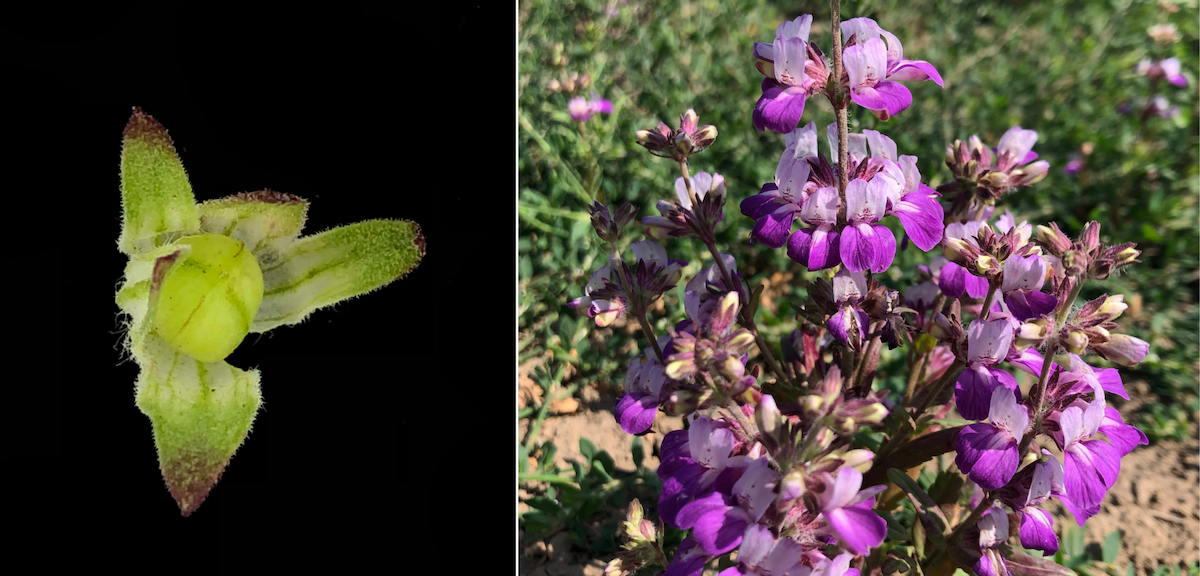
For River Partners, using not-so-local species was out of the question. Using plants gathered from as close as possible to a project site to restore surrounding areas is the best way to guarantee that they’re also compatible with local wildlife—a local leaf-mining insect might only feed on a particular type of cottonwood, for example, and birds in the area might depend on that insect.
Substitutions also might do well in the first few years of a restoration when they are irrigated and tended to in order to help them get established, but that wouldn’t mean that they could hold on and reproduce once times got tough. “We’ve seen it with gum plants in the Central Valley,” says Rentner. “We’ve seen it when a fire comes through after the second or third growing season. Nothing that was seeded out there comes back, because those genetics weren’t adapted to that site or those conditions as specifically as they needed to be.” Many restoration projects don’t do long-term follow-up of their sites, says Rentner, and it’s true that only one-quarter of the state agencies surveyed by the National Academies reported monitoring restoration sites for longer than three years.
Faced with these choices, River Partners paid for the seed—and decided it was time to start growing their own. Though it still buys seed from Hedgerow, it also runs a nonprofit operation, Heritage Growers, which grows mostly for River Partners projects, and sells any excess.
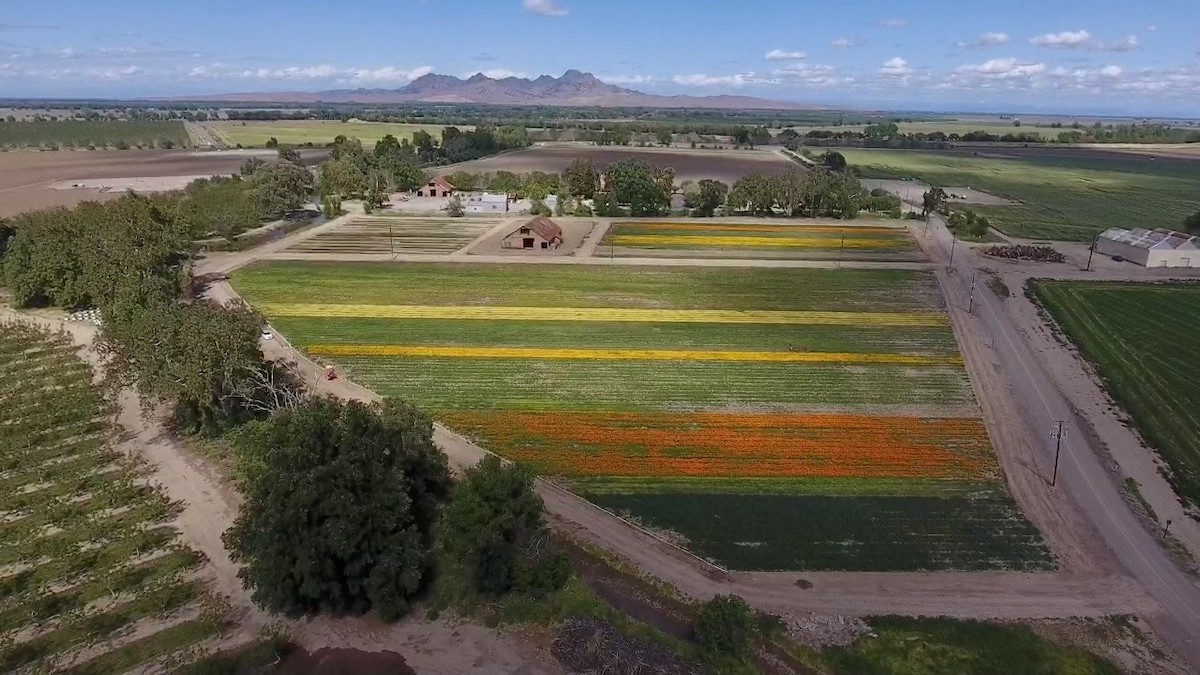
Growing your own seed lowers some risks and raises others. Once it’s ready, most seed needs to be planted within a year or so, before it loses viability. So ideally, you secure the money to buy it, or to grow it yourself, before or exactly when the seed is ready. In September 2022, the California Legislature authorized $40 million for San Joaquin Valley floodplain restoration, some of which was meant to grow seed for Dos Rios. In January of 2023, Gov. Gavin Newsom unexpectedly cut it from his proposed state budget. By May, it was restored entirely. But it took months after that for the first payments to actually reach River Partners, leaving Rentner to many discussions with the bank in the meantime. “They’re going, ‘You guys have the seed farm and where are the projects? Are we going to use the seed?’ And I’m going, ‘Trust me, the projects are coming, the governor just had a little blip! The money’s back! It’s coming.’ ”
Solutions do exist
That raw terror of planting a crop that you might never get paid for is one of the main factors that, nationwide, has kept the native seed industry from scaling up to meet demand. Growers told the National Academies experts that they could produce way more seed with way more diversity—“if they have access to the necessary source material to begin production and a clearer and more consistent signal for demand.” Programs that do this already exist at the state and federal level, the report continued—they are just fairly small, presently, compared to the nationwide need. For example, the U.S. Department of Agriculture’s Natural Resources Conservation Service operates Plant Materials Centers, which collect seeds from publicly managed lands, and teach farmers how to grow them (this would be particularly useful in California, according to the Native Seed Supply Collaborative). The Department of Defense plans out restoration projects years in advance—not something all agencies are able to do—to comply with the Sikes Act, which mandates “the conservation and rehabilitation of natural resources on military installations.” The Bureau of Land Management maintains seed storage facilities, which could be scaled up and adapted to help seed growers further diversify their offerings.
Landing the kind of federal support for native seed development that other public goods enjoy would also be a game-changer, according to Karina Mudd, cofounder of the California Native Seed Supply Collaborative. A native plant takes about as long as any new crop variety to develop into a consistent, reliable, commercially available species—on average, 10–20 years. “Unlike agronomic crops, the native seed industry has received far less investment to spur its advancement,” Mudd says. “Government subsidies, public policy and public-private partnerships have been critical to the evolution of everything from clean power, to vaccines, to agriculture itself. Native seed production is no different.”
But changing the business of seed is cultural as well as political. State code requires government agencies to get three bids from different suppliers—which has become increasingly difficult as native seed companies have consolidated. It also requires agencies to accept the lowest bid once certain minimum standards are met. That can be less than ideal from an ecological perspective, according to Mudd, because it can skew demand away from the more labor-intensive, wild-gathered (or one or two generations removed) seed that is the gold standard for many restoration ecologists.
NGOs or private companies that might be replanting a landscape after installing solar equipment or building a new development are less bound by bureaucracy, but also have a culture where plants are the last component of a project to be purchased. Like government agencies, they also tend to outsource seed buying to contractors or even subcontractors, who come on to a project later in the design process. Mudd has talked to some of these big clients about changing their ways, but they’ve told her that they are reluctant to pay early and have more locally adapted seed grown for a specific project because project needs and budgets can shift. As a result, the risk stays with the growers. “Imagine if you were a building contractor, and somebody said, ‘We want you to build this building. It’ll probably take you three to five years. Let us know when you’re done and we’ll pay you,’” says David Festa. “It’s absurd, right? You probably smiled when I said it. That’s what it’s like in this business.”





At Dos Rios, River Partners’ Austin Stevenot gathers a few seeds from Indian tobacco (Nicotiana quadrivalvis) growing on the edge of newly restored habitat. In the big rains of 2023, the Tuolumne River flooded the lower elevations, but many of the natives planted here can withstand droughts and floods alike. (Kate Golden)
In search of the missing seedy middle
In a complicated marketplace, bigness is an advantage that can help weather the bureaucracy and erratic funding that can sink scrappier competition, so it’s not surprising that the native seed business is showing the signs of becoming big business. This March, Hedgerow and the rest of the companies bought by S&S (now called Native Seed Group, and billing itself as “the largest vertically integrated native seed company in North America”) was bought by a private equity firm named Heartwood Partners. It’s a move that raises the possibility that the native seed business could become something like the defense industry, or a pharmaceutical company—flush with public subsidy, but sufficiently complex and labyrinthine to suppress competition.
That’s one future, but others are possible. Both Mudd, from the seed collaborative, and Pat Reynolds, general manager at Heritage Growers, have seen the culture around seed-buying change. The restoration of the Klamath River watershed, for example, began gathering and growing out wild seeds years in advance, says Reynolds, so that they would be ready to plant once dirt was actually being moved around. In Mudd’s experience, even one sympathetic official who is well-versed in the levers of power can shift protocol in ways that encourage seed-buying when a restoration project is in the planning stages, rather than already being implemented. Reynolds is seeing more interest in (and awareness of) source-identified seed—aka seed that buyers can trace back to when and where it was gathered and grown. “You can go to the hardware store, and buy California poppy, but that California poppy was probably grown in India,” says Reynolds. “Who knows how many generations were in that seed and where it originally came from?”

If the state and federal governments revise their standards for native seed to favor those of known origin, a market for such seeds will emerge, says Reynolds, “The demand really comes from the requirements.” Farming locally adapted native seed is a time- and labor-intensive process, from gathering it, to growing it out, to harvesting it, then sorting it to make sure any weeds haven’t snuck in, then testing it to make sure that it germinates. But the complexity of that work, along with the out-of-control demand for the product, is also a source of hope. Michele Ranieri, operations manager for Heritage Growers, came to the native seed business from organic farming, where making a living wage is rarely possible without being in possession of a massive amount of land, phenomenal business savvy, or both. She’s found restoration work to be a rare bird as far as agricultural careers go—a chance to work with the land and still make a decent living. “There’s a lot of opportunity,” she says, wonderingly. “I never would have known.”
SIDEBAR
Seed money
Together, the Bipartisan Infrastructure Law and the Inflation Reduction Act (BIL and IRA) allot billions of dollars for ecological restorations across the nation, and all this work will require native seeds. A few spending programs are explicitly meant to help implement the National Seed Strategy, including:
• $70 million to the Department of Interior for a national revegetation effort on private and public lands (BIL)
• $130 million to the U.S. Forest Service, as grants and direct spending, on revegetation and other National Seed Strategy–related efforts, especially restoring federal lands damaged by fires, invasive species, storms and drought (BIL)
• $582,000 to the National Park Service to collect native seeds for national parks across California, including at Golden Gate National Recreation Area, John Muir National Historic Site, Pinnacles National Park, and Point Reyes National Seashore (IRA)
—Kate Golden



